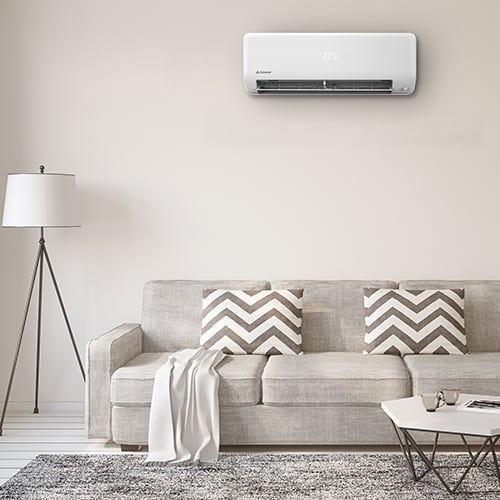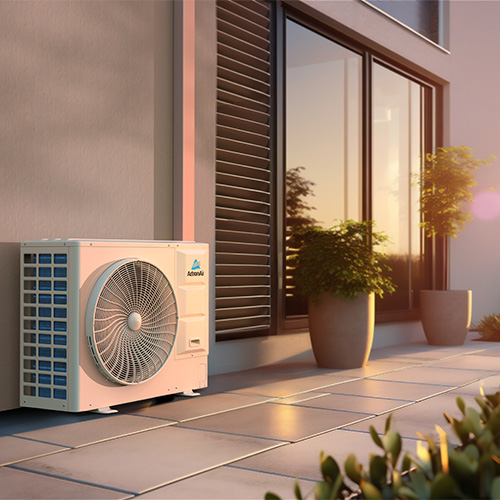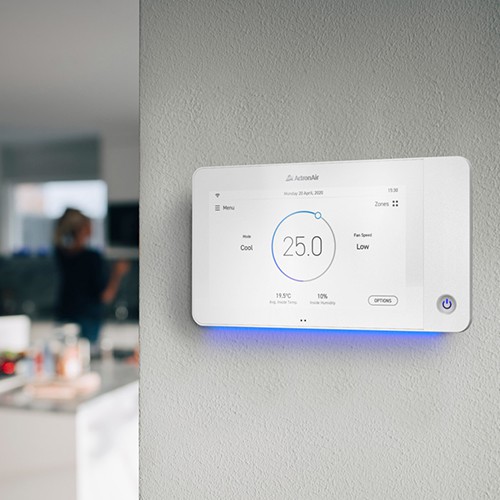Are your electricity bills too high in the peak summer and winter periods? Maybe your air conditioner isn’t particularly efficient. Maybe you keep the temperature too low or high. But it’s also possible that your home is poorly insulated.
What does this mean? Think of your air conditioner cooling or heating your home as a bucket being filled with water from a tap. If there are holes in the bottom of the bucket, you will have to turn the faucet up higher in order to fill the bucket. The more holes, the greater the flow of water needed to fill it.
Your air conditioner and your home work in a very similar manner. If your house is poorly insulated, it has lots of ‘holes’. The more holes you have, the harder your air conditioner has to work to keep the place cool or warm. This can make your electricity bills much higher.
Australian homes are notorious for poor insulation. Compared to many other countries, they tend to be quite large with thin walls. These features make it very easy for cool air to seep out in summer, or in during winter.
If you want to save on your electricity bills, it is important that your home is well insulated. This does have an upfront cost, but the long term savings make it well worthwhile. You can even do much of it yourself if you are handy.
How to Insulate Your Home
Now that we know how important insulation is, there are several things that you can do to help seal the air inside your home. Taking these steps will mean that your air conditioner won’t have to work as hard and you will save money on your power bill.
Whole House Insulation
If your home hasn’t already been insulated properly, you should seriously consider it. It’s best to call out a professional to perform an audit on your home and determine your insulation needs. They can recommend which parts of your home need to be insulated to help you control the temperature. While insulating your walls and roof can be expensive, most homes will recoup their outlay through energy savings in just a few years.
Insulate Your Windows
Windows are a common place for air to leak out of your home. There are often tiny cracks around the frame which allow it to escape. To check for any gaps, slowly run your hand around the frame. If you feel any air coming out from the edges, that means that there is a leak. Don’t worry, because it’s easy to fix. All you need to do is run some sealant over the gaps.
Look for Gaps in the Floor
If your house has floorboards, there could be gaps between them that are letting the air escape. You can try to seal these cracks with silicone, but it may be best to get professionals to insert floor insulation under the boards. There may also be gaps between the floor and the skirting board. You can run sealant along the edge between them to minimise any air loss.
Seal Up Your Doors
It’s easy for cold air to escape around the edges of your doors. To reduce this, you can install draught excluders, which are strips of metal or foam rubber that can help to block draughts. These are essential for exterior doors, but can also be useful for interior doors if you only plan on controlling the temperature of part of your home. Draught excluders are relatively easy to install yourself–some come in strips that only take minutes to fit.
Get Double Glazed Windows
Windows are a key source of heat transfer in your home. Unfortunately, normal glass windows offer very little insulation. Double glazed windows comprise of two panes of glass that are separated by gas. This design significantly improves a window’s insulation efficiency, helping to keep your home at a comfortable temperature.
Insulate Your Ducts
If your home has ducted air conditioning, you need to make sure that the ducts are also properly insulated. If they aren’t, you could be losing significant amounts of your cool or hot air before it gets where it is needed. It’s best to seal your ducts before you insulate them. This is done with mastic, a sealant that is relatively easy to apply yourself. Put it along all of the seals in your ductwork to help stop the air from escaping.
The two most common types of insulation are duct wrap and fibreglass. Duct wrap tends to be more efficient, while fibreglass is easier to install and also helps to absorb noise. The insulation needs to be applied to the outside of the duct to help the air stay at its desired temperature.
Insulation Will Save You Money
Think of insulating your home as plugging all of the holes in the bucket. It reduces the amount of water draining out, meaning that the hose doesn’t need to be turned on as high to fill it up. If most of the holes are plugged, the bucket will be easier to fill and stay full for longer. If you insulate your home effectively, your air conditioner won’t have to work as hard any more, saving you on power.
Following the above insulation tips will go a significant way towards plugging up your bucket and saving you on your electricity bill. The best part is that many of these solutions are low cost, while the more expensive ones tend to see a return on investment within a few years.











